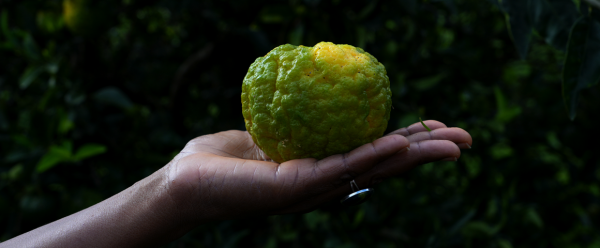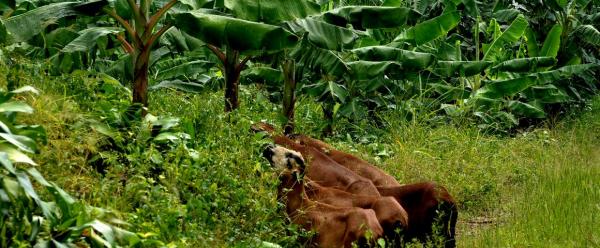Science at work 19 December 2025
- Home
- CIRAD news
- News
- Conserving biodiversity to limit disease emergence
Conserving biodiversity to limit disease emergence

Bats in flight in Cambodia © AdobeStock, Ralf
Emerging infectious diseases affect several million people a year throughout the world. The term refers to new pathologies such as Covid-19, which has caused between 6 and 15 million deaths, depending on estimates. Other known diseases whose incidence spikes during epidemics – such as Ebola – are also classed as emerging diseases. The vast majority are transmitted from animals to humans, and are known as zoonoses.
Understanding the links between biodiversity and health
Health authorities worldwide are concerned about global changes that are affecting biodiversity. With good reason: human health is closely linked to biodiversity. "Human activity and deforestation increase contact between humans, domestic animals and wildlife", says Julien Cappelle, a disease ecologist at CIRAD and BCOMING project coordinator. "These new forms of proximity mean much greater opportunities for disease transmission to humans."
This is compounded by another mechanism that favours the emergence of certain zoonoses such as virus West Nile virus. "The less diverse ecosystems are, the more pathogens spread between individuals of a given species, which in turn increases our exposure", Julien Cappelle adds.
It is vital that we understand the mechanisms that favour the emergence of infectious diseases. This is the objective set for the BCOMING project (Biodiversity COnservation to Mitigate the risks of emergING infectious diseases). "The aim is to build strategies to conserve biodiversity and monitor diseases in order to reduce the risks of emergence", the researcher says.
How can this be achieved? Thanks to 14 partners worldwide and 6 million euros of funding from the Horizon Europe programme. CIRAD is coordinating activities by virtue of its expertise in exploiting the links between ecosystem health and biodiversity to limit the spread of infectious diseases. The BCOMING project will begin in August 2022, to run for six years.
Three countries, seven pathogens, two key stages
The project centres on seven pathogens in three study zones: Cambodia (SARS-CoV-2), Guinea (Ebola, Marburg and Lassa), and Guadeloupe (West Nile). The trematode worms and coronaviruses found in those three zones will also be studied. All three countries are very rich in terms of biodiversity, and tropical zones are known to be hotspots for zoonosis emergence.
"This choice was also prompted by sociocultural differences and by existing partnerships and projects", Julien Cappelle adds. "The available diversity will allow us to test a new standard approach applicable worldwide and capable of adapting to local constraints."
Two stages are planned to reach the objectives set:
• Boosting knowledge of zoonotic disease emergence
The project's researchers will gather ecological, socioeconomic, environmental and epidemiological data, notably using the latest field tools for rapid pathogen detection. "The data collected will be analysed in a novel way", Julien Cappelle explains. "One of our aims is to assess the impact of human activity on disease transmission, which involves a range of crucial factors that are not yet clearly understood." This first stage will lead to the development of a standard approach that will benefit the entire scientific community working on the mechanisms of zoonosis emergence.
• Preventing the emergence of zoonotic diseases
So-called agent-centred models will be used to integrate the data from the project. "They serve to simulate disease transmission between animals and humans", says Julien Cappelle. They will be used to test different biodiversity conservation strategies or new monitoring systems aimed at reducing the risks of disease emergence.
An innovative participatory approach
Those models will be hugely useful to the BCOMING project. "The project's originality lies in our participatory approach, associating the whole range of local, regional and national players", Julien Cappelle says. "Agent-centred models will be used to fuel discussion prior to implementing prevention measures tailored to each study site." The various decision-makers – local communities, NGOs and national authorities – will benefit from these concrete solutions for preventing the advent of zoonoses.
So what's next? The project launch in August 2022, immediately followed by the finalization of data gathering protocols and development of the first models. "A meeting of all the partners will allow us to finalize this first phase and launch the co-construction process", the researcher concludes.




























